Why Your Tomato Plant Is Not Flowering: 10 Reasons & Fixes
-
Pete Ortiz
- Last updated:
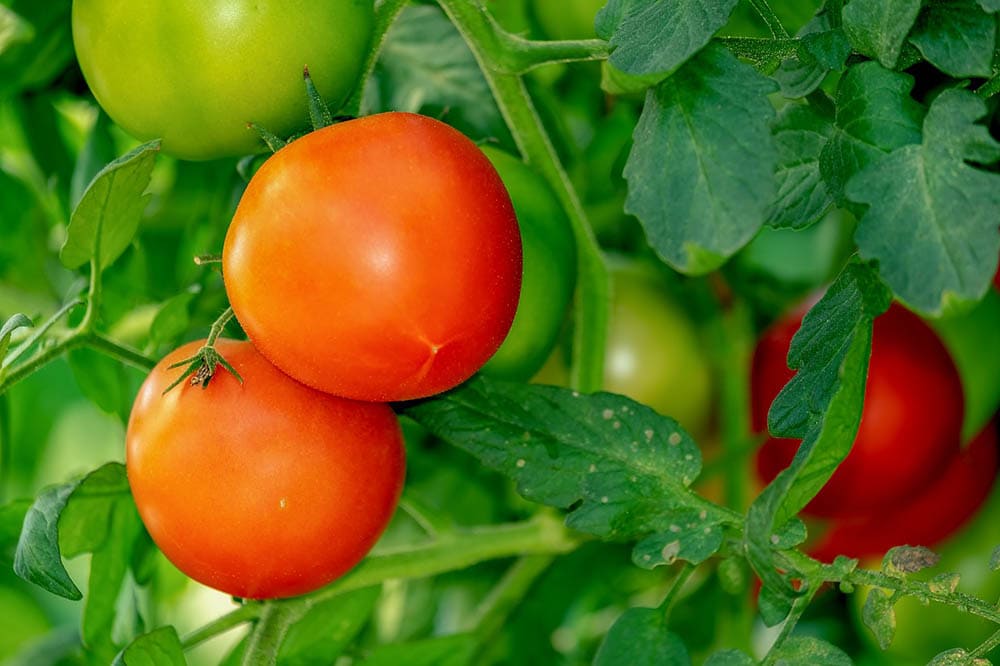
Tomatoes are a garden favorite, and for good reason! People love using tomatoes in their meals. Plus, tomato plants do not need that much space to grow, making them ideal for small gardens or as potted plants to keep inside your home.
However, at times, tomatoes may fail to flower, and this means you will not have any harvest but massive losses, especially if you are doing tomato farming for commercial purposes.
Knowing why your tomatoes are not flowering is necessary to help fix the problem. This article looks at how tomatoes grow, the major reasons your tomatoes are not flowering, solutions to each problem and other tips to increase productivity. Keep reading for a deeper insight!
How Tomatoes Grow
Tomatoes thrive well in warm weather. They require about six to eight hours of sunlight to grow. The crops don’t need ample space to grow well, so they can fit in your home garden, backyard, or any other indoor space in containers.
They are perennial crops; thus, they can thrive for over two years. Tomatoes are available in many cultivars, ranging in sizes, colors, shape, and time required to ripen. A single crop can yield up to 5 to 6 kilograms of fruit.
When planting tomatoes, don’t put them in the soil too early. The ideal time for planting is late spring and early summer. The flowers self-pollinate, so you only need a single crop to get several tomatoes. Besides, wind and bees help during the pollination process. It takes the crops one month to flower after transplanting into your garden.
The seedlings germinate for around one week or up to ten days. They take sixty days and not more than a hundred days, depending on the variety to harvest. To get the proper tomato harvest, you should grow at the required temperatures, water the vine as required, use suitable fertilizers, and protect it from pests.
The 10 Reasons Why Your Tomato Plant Is Not Flowering
1. Lack of Right Nutrients Quantity
Your tomatoes may fail to flower because of lacking the proper nutrients. The imbalance of nutrients in the soil will lead to no or poor flower development. On the other hand, excess nutrients can also harm your tomatoes. For example, tomatoes require enough phosphorus for flowers to form. However, excess phosphorus affects other micronutrients available to your crops, such as iron.
Similarly, excess boron affects your crops’ growth, but lack of it leads to poor pollination affecting the quality of pollen and the development of the pistil, the female part of the flower.
If you think your soil has a nutrient imbalance causing the lack of flowering of the tomatoes, a soil test is critical. Here are some of the most vital nutrients to enhance your tomatoes’ flowering.
- Calcium: Lack of calcium causes blossom end rot in tomatoes. Your tomatoes lack color, and leaves start to curl inwards. If you find these signs, you need to add more calcium to the soil.
- Potassium: Potassium is critical for fruit and flower growth in tomatoes. Lack of enough potassium in the soil leads to old, scorched leaves and low-quality fruits. The leaves also become brownish and roll up downwards and inwards.
- Magnesium: Insufficient magnesium leads to leaf discoloration between the veins of your tomatoes. They turn to pale yellow and then brown.
Other vital nutrients that promote flower growth in tomatoes include zinc, manganese, iron, zinc, and sulfur.
2. Insufficient Sun Exposure
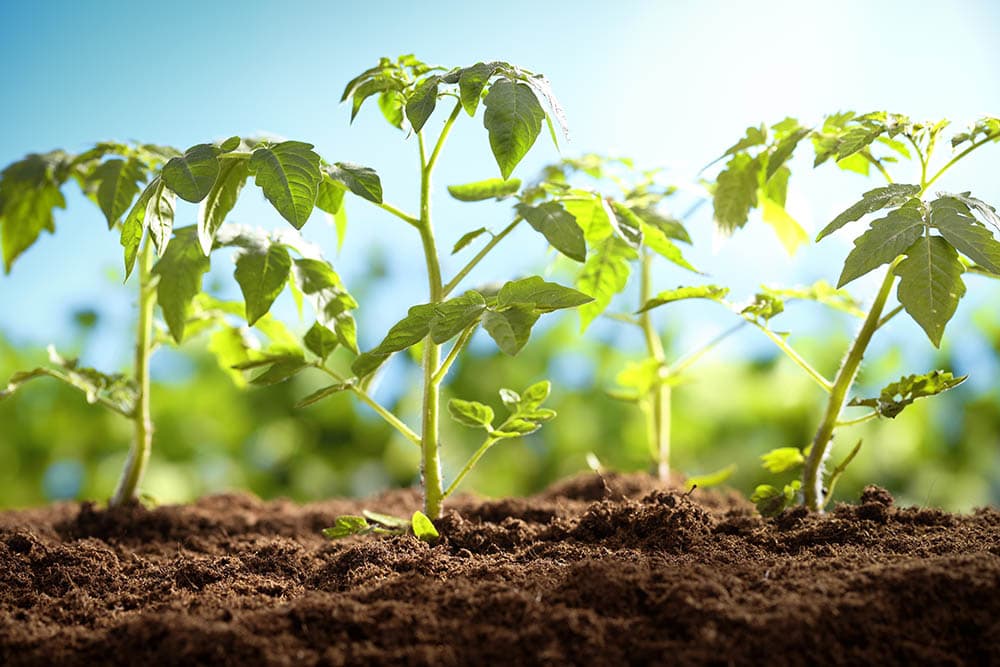
Tomatoes need a lot of energy to develop flowers, and the sun is the primary energy source. With insufficient sunlight exposure, your crops will grow but will not produce flowers. You will note that your tomatoes are not getting enough sunlight when leaves start turning yellow or dark green and drop.
Consider putting your tomatoes where there is enough light for around six to eight hours daily. If your tomatoes are in the shade, transfer them where there is sun, water them, and feed them to allow the flowers to grow.
3. Excess Nitrogen
Tomatoes require nitrogen to promote cell and chlorophyll development. However, excess nitrogen can stop the development of flowers.
The problem may be caused by the excess application of fertilizers and manure in the soil. Nitrogen may also get into your soil naturally through atmospheric deposition in rainfall or from N fixation caused by bacteria and legumes.
Here are tips to reduce nitrogen in your soil:
- Add fine wood chips or sawdust to the soil to absorb and soak excess nitrogen from your soil.
- Soak the soil with water often to push the excess nitrogen deeper where the tomato roots cannot absorb it. You can also soak the soil before planting the tomatoes.
- Spreading mulch in your garden helps add fertility to the soil. However, mulching can also help absorb excess nitrogen from your tomato garden. You can add inorganic mulch such as fall leaves or inorganic mulch such as black plastic or rocks. Dyed mulch such as scrap wood absorbs more nitrogen when breaking down.
- Mix the soil with hydrated lime to ensure your tomatoes are not affected by the excess nitrogen. You can add twelve ounces for clay soil, or four ounces for every square yard for sandy soil.
- It’s also possible to reduce excess nitrogen from your soil by mixing it with organic materials such as oyster shells, crushed marble, bone meal, or hardwood ash.
4. Unfavorable Temperatures

Unfavorable conditions can make your tomatoes fail to flower. Daytime temperatures beyond 85 degrees Fahrenheit and low night temperatures below 55 degrees Fahrenheit affect the flowering process. Such temperatures affect pollination leading to no flowering. Tomatoes blossom well at 75 to 85 degrees Fahrenheit during the day. It’s also worth noting that different varieties require distinct temperatures to flower.
So, choose tomatoes depending on the climate of your area. If you grow the tomatoes in a greenhouse, temperatures above 27 degrees centigrade will affect your crops’ flowering.
When the temperatures go below 55 degrees Fahrenheit, you can use plastic mulch to keep the tomatoes warm. Dark plastic coverings can also increase temperatures by 5 to 10 degrees. To protect your tomatoes from high temperatures, you can use shading, water frequently, or mulch with compost.
5. Heavy Foliage
Tomatoes may also fail to flower due to heavy foliage that might prevent them from accessing enough sunlight. If you find more branches on tomatoes that are not flowering, it means that more energy is being diverted to that part producing the foliage.
Correct pruning helps divert the energy your crop uses to develop foliage to the parts that help produce flowers and fruits. Prune the excess foliage for healthy flowering and fruit production. This also helps protect your tomatoes from diseases and pests.
Pruning also ensures the tomatoes get enough sunlight to allow them to thrive. Besides proper pruning, you should also do it at the right time. Pruning at the wrong time makes it hard for the crops to focus on flowering.
6. Diseases
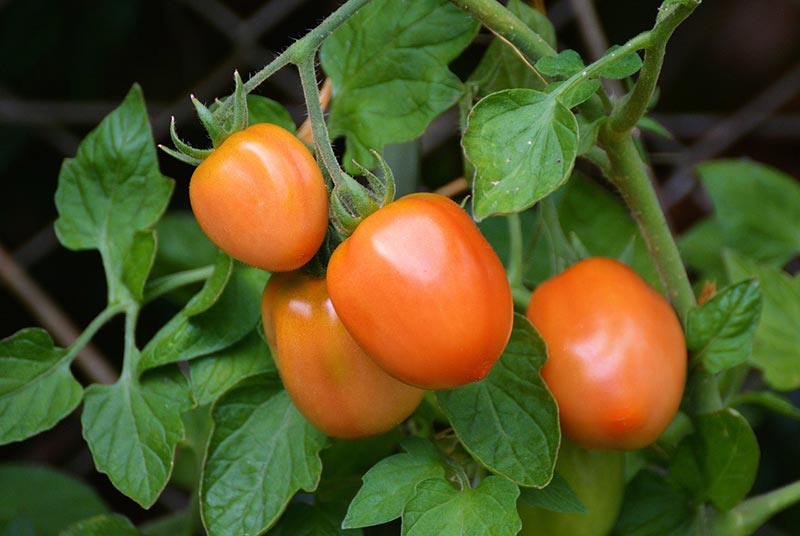
Despite that tomatoes are hardy and can thrive without needing much care and maintenance, they can be affected by diseases. The diseases affect growth and hinder the development of flowers and fruits. The roots may be affected, making it hard for the plant to get water and nutrients from the soil. Other diseases may affect the leaves, hindering photosynthesis and leading to stunted growth and death of the plants. Some diseases include late blight, early blight, bacterial speck, Southern blight, etc.
Bacterial spots kill tomato plants, and because of this, they don’t flower.
You should destroy the affected crops if you find your tomatoes wilting and leaves covered in spots. This helps prevent bacteria from spreading to others.
Also, plant only certified tomato seeds and plants and avoid planting in an area where other tomatoes and peppers were planted the previous year. It’s also advisable to avoid overhead watering using furrow or drip irrigation. Spraying with copper fungicide also helps control bacterial diseases.
7. Lack of Proper Pollination
Flowering in all plants results from pollination. Pollination allows the male and female seeds to get together to form blossoms. Without proper pollination, you cannot expect your tomatoes to flower.
While tomatoes can pollinate themselves, they are not the best self-pollinators. They require wind, airflow, and bees for effective pollination and allow flowering to occur. So, if your garden is located in an area where the three are unavailable, they may have difficulty flowering.
You should destroy the affected crops if you find your tomatoes wilting and leaves covered in spots. This helps prevent bacteria from spreading to others.
The best option is to ensure your plants are exposed in the garden to allow proper pollination. If you have planted the tomatoes in a pot indoors, you may be required to hand pollinate the crops. It’s also advisable to plant the tomatoes close to each other. Another solution is planting other bright-colored crops in or around your garden to attract pollinators such as bees or insects.
8. Insufficient Watering
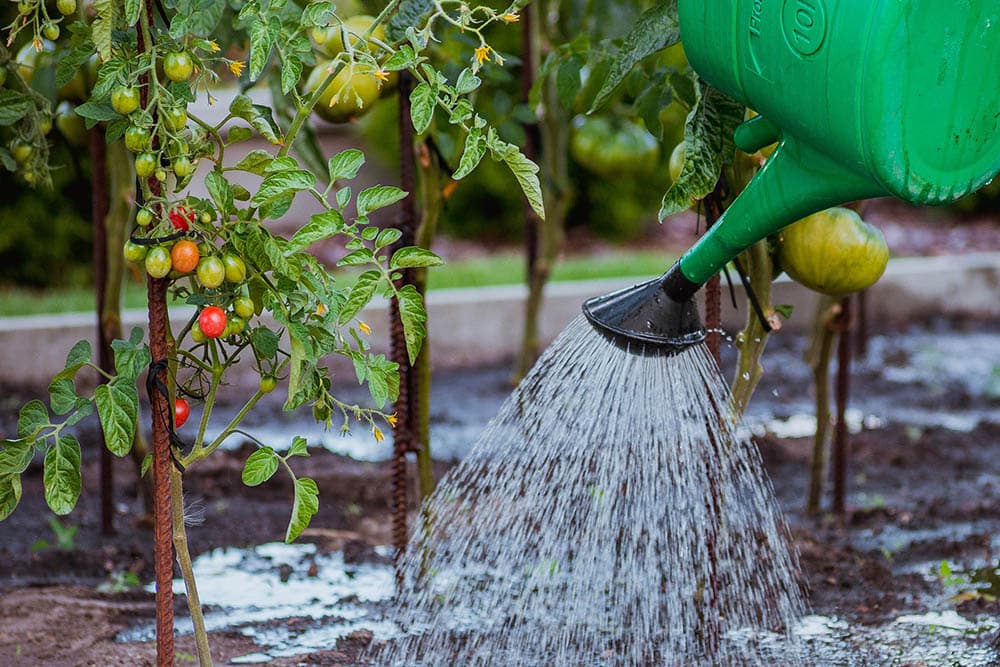
Tomatoes require a lot of water. Water is essential as it helps control blossom end rot and the transportation of essential nutrients from roots to other parts. However, you should also avoid drenching your crops because this will affect their growth and production.
Insufficient watering causes the tomato leaves to turn yellow and wilt. This makes it impossible for the crops to carry out photosynthesis and transpiration. Eventually, the crops weaken and fail to blossom. Shallow watering can also stress your tomatoes because the deep root system fails to get enough water. This makes them fail to produce flowers, and the already formed ones start dropping.
Deep watering is needed to ensure the entire crop gets sufficient water to allow growth in all stages. Water the crops in the morning to allow less evaporation and do it when the temperatures are high. Mulching also helps maintain moisture in the soil. Avoid overhead watering since the splashing can spread diseases among the crops.
9. Low or Excess Humidity
Humidity is critical to the health of your tomatoes. Excess humidity leads to fungal infections that affect the flowering process. On the other hand, low humidity and dryness make the pollen sticky. Both excess and low humidity make it hard for your tomatoes to pollinate, leading to no flower growth.
If you have planted the tomatoes in an area with low humidity, you can water your crops’ foliage. This helps to cool the tomatoes and boost humidity around them. However, if you are in a high humidity area, watering the foliage increases the risks of fungal diseases.
The best option is to boost the airflow between your crops. Space the tomatoes well and prune them correctly to reduce the risks of diseases spreading among your crops.
Another option is to choose humidity tolerant varieties such as Flora dade or yellow pear.
10. Pest Infestations
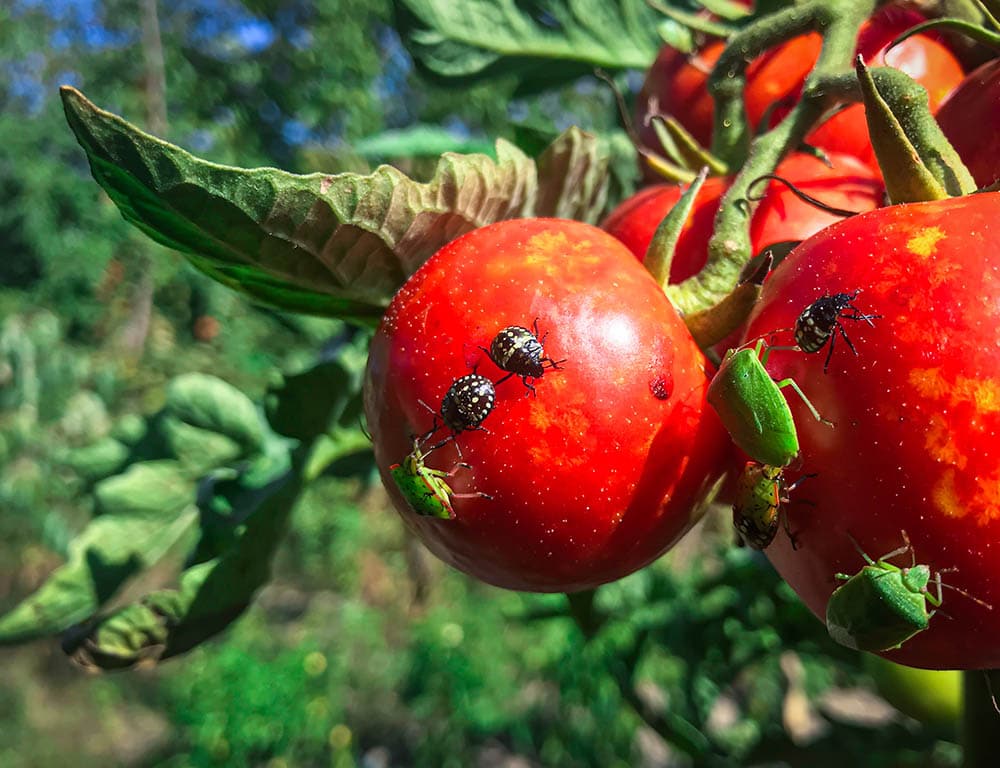
Tomatoes can be infested by various pests, including aphids, cutworms, flea beetles, hornworm snails, and slugs. Despite foraging on the crops, the pest can also cause diseases that hinder the flowering of your crops.
Prevention of pest infestation is the best option. Observe the proper garden hygiene by pruning the diseased and dead leaves. Allow effective airflow and invest in row covers. Water the tomatoes correctly and use clean garden tools.
Use only the approved pesticides that don’t have any adverse effects on tomatoes. Besides, you can also use beneficial insects that eat the harmful ones. For instance, you can introduce bees, ladybugs, wasps, and birds.
Tips to Improve the Productivity of Your Tomatoes
Despite ensuring that your tomatoes flower effectively, here are other tips to help boost your tomatoes’ productivity.
- Choose the high-yielding varieties depending on your area
- Prepare your soil more effectively before planting
- Buy high-quality tomato seedlings
- Space your tomatoes accordingly
- Provide the essential nutrients
Conclusion
Flowering is a crucial phase of your tomatoes’ growth because it determines the yields you get from your garden. Problems such as poor nutrition, pest infestations, excess or low humidity, diseases, and others hinder effective flowering.
It’s good to ensure your tomatoes get the proper nutrients, sufficient water, the right humidity and temperatures. Also, ensure they are well pruned and protected against pests and diseases to aid proper flowering.
Besides, to increase productivity, you also need to plant high-quality seedlings, prepare your garden well before planting and choose a variety that does well in your area.
- Why are My Tomato Plants Not Flowering?
- Why Does My Tomato Plant Have No Flowers
- Insufficient Pollination can hinder tomato flowering
- How to facilitate flowering for Tomatoes
- Tomato yield and water use efficiency change with various soil moisture and potassium levels during different growth stages
- Growing tomatoes in home gardens
Featured Image Credit: Couleur, Pixabay
Contents



